A projector lens is an
optical device which transmits and
refracts
light,
converging or diverging the beam. A projector uses a number of lenses and prisms to first split light into 3 primary colours
red, green and blue light is then reflected by (or passes through) the projection panels. Lenses then recombined the primary images
into a full colour image, before directing the light through the main projector Lens and onto your screen.
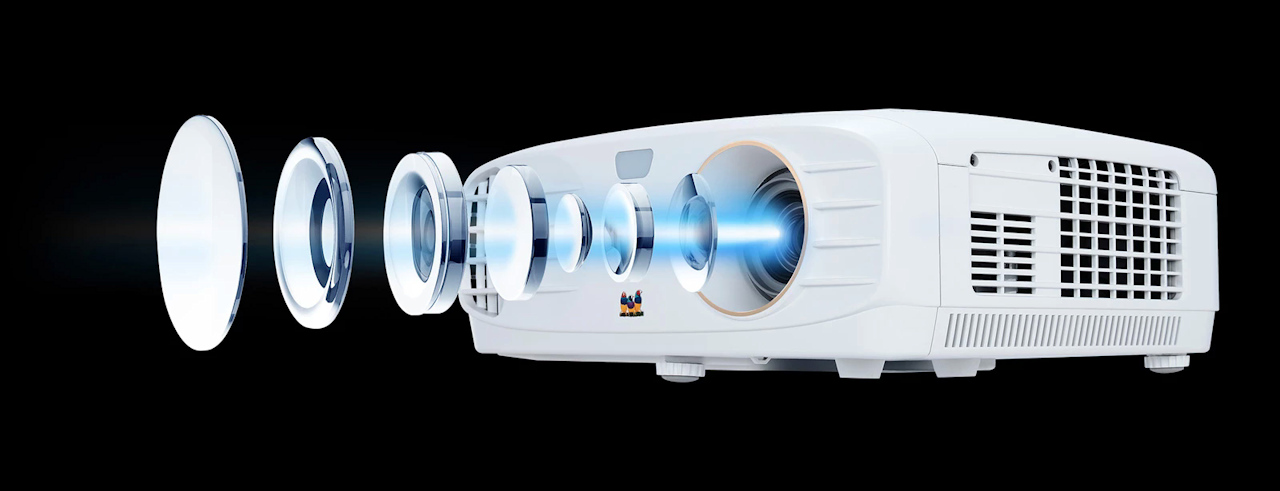
Viewsonic lens array
Throw Ratio
Every model has a different set of lens characteristics. One of the more important is its throw ratio.
Throw ratio is the distance from the screen that a projector needs to be in order to create a specified size image.
Throw ratio is usually defined by the width of the image. For a fixed lens with no zoom the Throw ratio is quoted as 2:1 where 2 refers
to the Throw Distance and 1 refers to the screen width at that distance. So for a throw ratio of 2:1, the projector would need to be 2 meters
away from the screen to give a 1 meter image.
Zoom lenses have an adjustable throw ratio between the minimum zoom and the maximum zoom. An example of the throw ratio for a
zoom lens is 2-2.5:1, the 2-2.5 refers again to the Throw Distance. At a distance between 2 meters and 2.5 meters an image size of 1
meter is possible by adjusting the zoom setting
The throw ratio can be calculated from the focal length of the lens, and the diagonal size of the projectors internal panel.
A zoom lens will have two focal lengths, one for each extreme position of the lens - wide-angle and tele.
A constant factor has to be used to calculate the throw ratio, this factor is dependant on the native aspect ratio of the projection panel.
Approximately these factors are:
4:3 = 1.25
16:9 = 1.15
16:10= 1.17
Note:The focal length and panel diagonal must be expressed in
the same unit (e.g. mm). If you are using the projector close to the extreme
position of the lens - remember this is an approximation. Check with the
manufacturer to confirm your calculation.
The Throw Ratio can be used when either the Throw distance is known to calculate the image size at that distance
or when the screen size is known and the throw distance is variable. Both use the formula below.
Width (W) x Throw ratio = Throw Distance (D)
Example 1:
Calculating the Throw distance from the screen size - if we consider a projector with the 2-2.5:1 throw ratio and a screen 3 Meters wide.
Throw Distance (D) = Width (W) x Throw ratio
Minimum Throw Distance = 2 x 3 = 6 Meters
Maximum Throw Distance = 2.5 x 3 = 7.5 Meters
Example 1:
Calculating the Screen size from the Throw distance - if we have to place the projector at 5 Meters from the screen, what would the Image size be?
Width (W) = Throw Distance (D) / Throw ratio
Largest image = 5 / 2 = 2.5 Meters
Smallest Image = 5 / 2.5 = 2 Meters
One thing to note when using the Throw Ratio is that it will give you an answer for any throw distance and any image size, remember the image still
needs to fall in the focus range of the projector.

Projection Lenses come in a wide range
Ultra Short Throw
In very confined spaces, and for rear projection. Ultra Short Throw (UST) and the closest you can go. But this comes at a price. With the highest quality compact
optic array, These are the most expensive.
UST lenses, have a throw ratio below 0.49:1
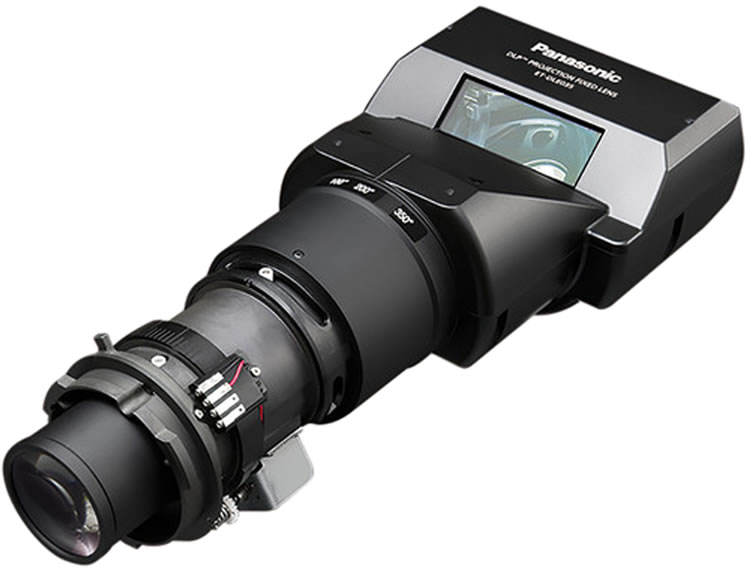
Panasonic UST lens
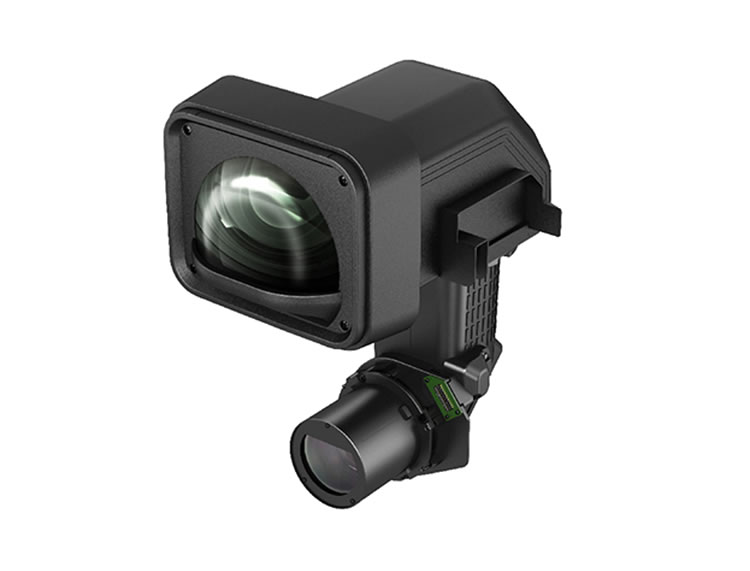
Epson UST Lens
These new exceptional optics offer insperation for new and exciting oportunities in projection. Floor mount for retail spaces, under table for
Short Throw
When the throw distance from the projector to the screen is restricted a Short Throw may be necessary to allow focusing of the image. These
lenses are increasingly popular. In the home, they prevent people walking throught the projected beam, and in the workplace presenters no longer need
to look in to the light. Short throw increase the possibility of hot spotting, special screens are available.
Short throw, have a throw ratio between 0.5 to 1.2:1
Standard Throw
If you can use a standard throw, you will be saving money. The standard throw lens, is used to calculate the projectors specifications.
It gives the brightest image. Other lenses for that model, will reduce the brightness.
Standard lenses, have a throw ratio between 1.2 to 2.4:1
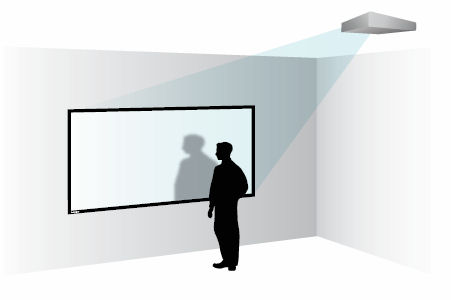
Standard throw - shadowing
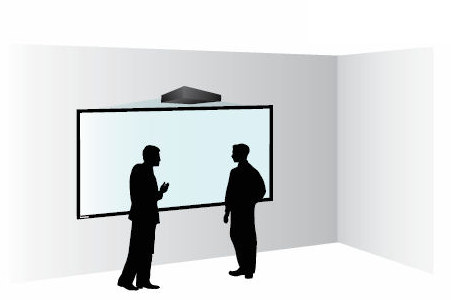
Ultra Short Throw - No shadow
Long Throw
Ideal when the projector can not be positioned close to the screen. Often used in auditoriums, Churches and conference rooms to allow
positioning of the projector behind the audience.
Long throw lenses, have a throw ratio between 2.41:1 up
Zoom, Zoom, Zoom.
If you are using your projector for mobile applications, a zoom can be very handy. It gives you the ability to set the projector
at a convenient location, and adjust the projected image size. Without a zoom , the only way to adjust the picture size is move the
projector forward or back. A unit with a zoom factor of 1.2x will only let you adjust picture size by 20%.
You can often move the projector a foot or two either way and accomplish the same adjustment. Nevertheless, if you have a fixed screen
size you are trying to fill, even a limited range zoom will make it easier to fine tune the image size to the screen.
For a Recommendation:
Call 1300 88 11 79
For a Recommendation:
Call 1300 88 11 79
Micro Lens Array (MLA)
You may have noticed on the projector specifications under projection system "with MLA". These are small lenses,
generally with diameters less than a millimeter. In projectors the main aim of the Array is to redirect the light that
would otherwise be lost inside the projector through the prism and out of to the screen. This has two benifits one is an increase in
brightness and the other is a reduction in the heat this light would have created inside the projector.
Image Offset
Projector offset, presented as a percentage, refers to the distance between the center of the lens to the image bottom
(when placing the projector on a table) or image top (when mounting the projecting on a ceiling).
For example, when placed on a table, a projector with a 100 % offset would project an image whose bottom edge is in line
with the center of the projector lens and that extends upwards. A 125% offset lens would project an image whose bottom edge is 25%
of the image's height above the center of the projector lens.
Knowing the offset of a projector will help you decide how to position the device. Whether to place it above the screen, below the
screen, or mid-screen without tilting the projector.
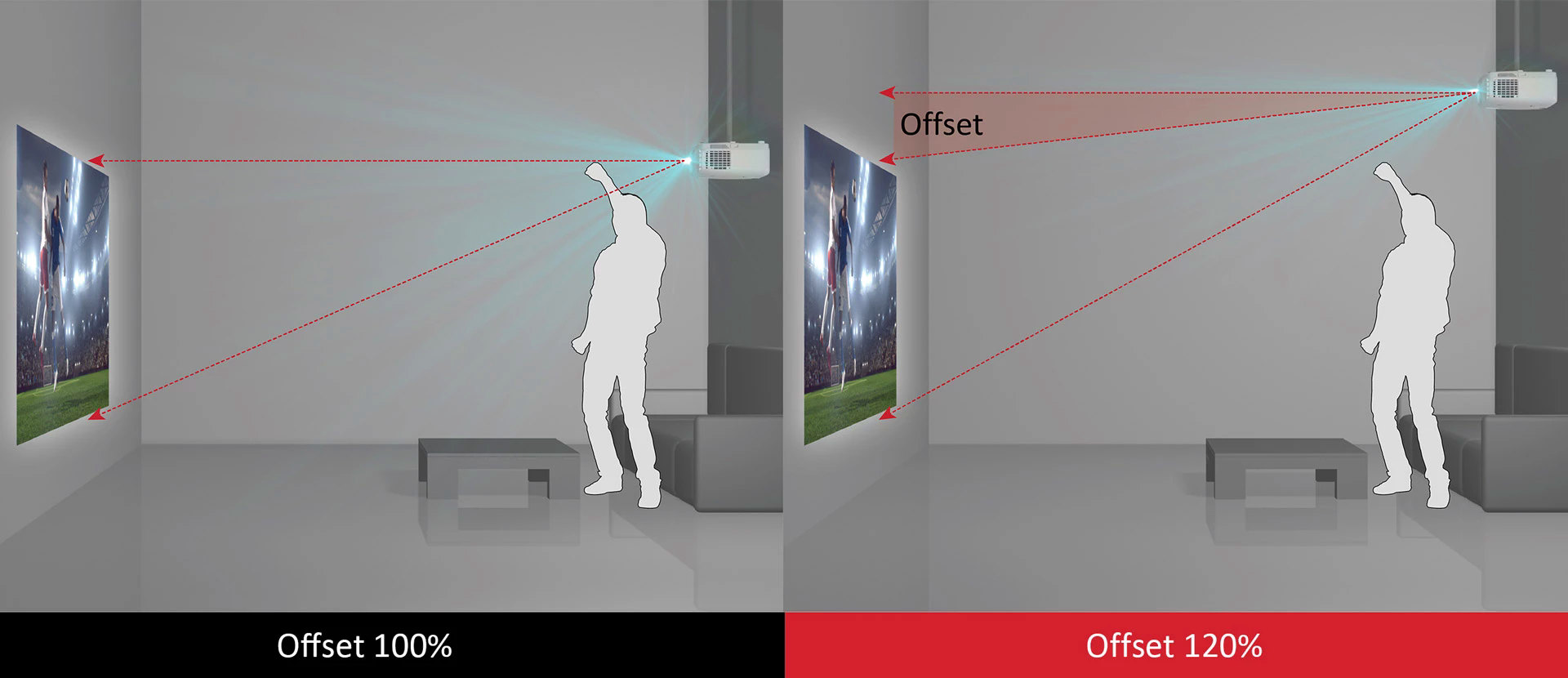
Image offset
Lens Shift
A growing number of projectors now come with Lens shift allowing you to position your projector off center to the screen. Horizontal
lens shift permits placement either to the left or right of the room, Vertical gives more flexability above or below the screen.
Lens shift changes the projected image inside the optics maintaining the maximum resolution of your image. Keystone Correction changes
the image projected at the projection panel (lcd or dlp etc.) and reduces the resolution of the image.
Lens Shift example:
Costs
If your projector position is not flexible and you require either a Short or Long throw, Look for a projector that has optional lenses
available in our specifications, details of the lenses can normally be found in the PDF brochure. If possible look for a projector that
comes with the lens you require as standard, Purchasing separately can be very expensive.